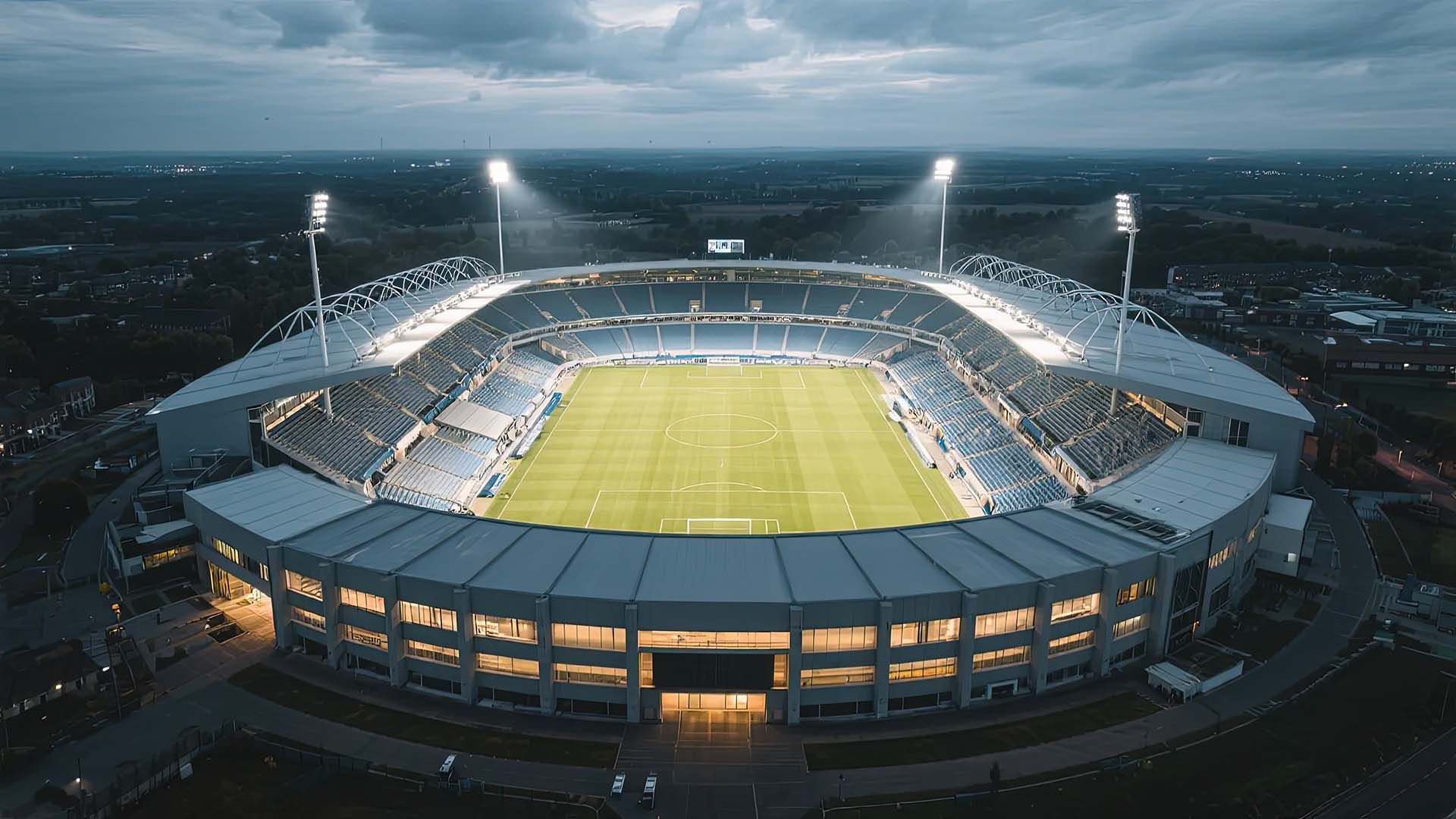Special Event Venues in Seattle
Special Event Venues in Seattle
Looking for the ultimate Seattle event space? You've come to the right spot! From historical buildings with a story to tell to modern spaces with stunning views, Seattle has it all. Whether you're organizing an intimate gathering or a large corporate event, these venues cater to every need with their unique settings and exceptional amenities. Join us in the following guide as we uncover the best event venues the Emerald City has to offer!
1. The Boxyard
Located in the SODO district, The Boxyard is just steps away from T-Mobile Park and Lumen Field, making it a prime spot for sports and entertainment events. The venue includes the Hatback Bar & Grille, Steelheads Alley microbrewery, and Victory Hall, which is a banquet and event space that doubles as an indoor-outdoor beer garden during local games.
Victory Hall itself offers 9,500 square feet of customizable space with top-notch AV equipment that’s ideal for any meeting or event. With its sports-themed décor and American fare, The Boxyard combines fun and functionality, making it a versatile choice for a Seattle event space.
2. Olympic Sculpture Park
For those who appreciate art in a natural setting, the Olympic Sculpture Park presents a unique combination of artistic and environmental beauty. Managed by the Seattle Art Museum, this free-admission park features an array of modern and contemporary sculptures spread across nine acres of landscaped grounds, with the majestic Puget Sound as its backdrop.
The park offers adaptable meeting spaces, including the PACCAR Pavilion, which can accommodate up to 300 guests. For more intimate gatherings, the Alvord Art Lab offers capacity for up to 46 attendees. With the option to extend gatherings to the outdoor terraces and covered plazas, this venue is perfect for integrating high-profile events with the tranquility of an art-filled park. Whether you're looking to hold a corporate event or a casual get-together, this venue offers a scenic backdrop and plenty of room for guests to mingle both indoors and out.
3. Seattle Art Museum
Step into the cultural heart of the city at the Seattle Art Museum (SAM), where your guests can enjoy the privilege of roaming exquisite gallery spaces. Located just steps from the iconic Pike Place Market and the bustling Seattle waterfront, SAM provides a sophisticated setting for any special event.
This premier Seattle event space offers grand, light-filled rooms that can easily accommodate large receptions, complemented by the catering services of Shooby Doo Catering. Whether it’s a corporate event or a lavish wedding, SAM creates a memorable atmosphere that is both elegant and accessible, making it a standout choice among Seattle event spaces.
4. Space Needle
Elevate your next event at the Space Needle’s SkyLine Level, where the panorama extends from the Olympic Mountains to Mt. Rainier. Situated 100 feet above ground, this iconic Seattle event space offers breathtaking 360-degree views of the city and its natural surroundings.
The venue features several distinct spaces: the Lake Union Room and Puget Sound Room, each capable of hosting up to 200 guests with views that encapsulate the essence of Seattle. For larger events, the combination of all three rooms accommodates up to 300 guests in a reception style. Every booking includes a complimentary visit to the Observation Deck, adding an exclusive touch to your gathering. With its impressive vistas and top-tier hospitality, the Space Needle promises an event experience that is as spectacular as its setting.
5. Lotte Hotel Seattle
Lotte Hotel Seattle redefines elegance and efficiency for event spaces in the downtown area. With over 27,902 square feet of meeting and event space, including two luxurious ballrooms and 10 sophisticated meeting rooms, it's designed to host everything from expansive international conferences to intimate board meetings. The hotel's modern facilities are complemented by advanced A/V services, high-speed WiFi, and expert event planning services.
Furthermore, gourmet catering options and a full-service business center enhance the experience, ensuring every detail is perfect. Whether organizing a gala, a corporate gathering, or a private celebration, Lotte Hotel Seattle provides a backdrop of refined urban luxury, making every event a standout occasion.
6. Arctic Club Hotel
The Arctic Club Hotel captures the essence of Seattle's rich history with its Northern Lights Dome Room, an elegant space distinguished by its rococo gilding and stained-glass ceiling. This 4,800-square-foot grand ballroom is perfect for hosting memorable weddings and grand corporate events, offering a blend of historic charm and modern amenities.
In addition to the Dome Room, the hotel features a total of five event spaces that cater to various group sizes and event styles. Guests enjoy thoughtful amenities like complimentary breakfast and valet parking, which contribute to a seamless and luxurious event experience at one of Seattle’s most celebrated venues.
7. Block 41
Block 41 stands out in Seattle's Belltown neighborhood as a beautiful example of industrial chic, ideal for those looking to host an event in a space that blends raw architectural elements with contemporary design. This venue features two levels of event space, including the elegant Bert & Tot Ballroom and the all-purpose Ewing Theater, perfect for everything from glamorous weddings to corporate functions.
With capacities ranging up to 700 people, Block 41 accommodates a variety of events with style. The integration of state-of-the-art audiovisual equipment and flexible space options ensures that each event can be tailored to meet specific needs. Thus making it a popular choice for a modern, dynamic Seattle event space.
8. AXIS Pioneer Square
Located within the historic 1890 Globe Building, AXIS Pioneer Square seamlessly blends historic charm with contemporary versatility, making it an ideal Seattle event venue. The space features original 15-foot brick archways and antique wood floors set beneath soaring 17-foot ceilings that create an open, airy atmosphere.
This venue provides 10,000 square feet of customizable space that can be tailored to fit any event, from elegant weddings to professional photo shoots. The ability to adapt the layout with movable walls and modular setups allows each event at AXIS Pioneer Square to feel unique and personalized, ensuring a memorable experience in a historic Seattle setting.
9. The Ruins
The Ruins combines the charm of historic Seattle with a touch of European flair, creating a venue that transports guests to another time and place. Known as "Seattle's best kept secret," this unique private dining club and event venue is nestled in lower Queen Anne Hill and surprises with its lavish, eclectic décor. Inside, guests are treated to hand-painted murals and a collection of quirky art and antiques, providing a stunning backdrop for any event.
From intimate cocktail hours in its lush garden to grand dances beneath chandeliers in the opulent ballroom, The Ruins offers a range of dynamic spaces. Each event is enhanced by farm-to-fork cuisine prepared by Herban Feast, utilizing fresh ingredients from sister venue Fox Hollow Farm. The Ruins ensures a captivating experience with surprises around every corner, including a life-sized animatronic elephant, making it a memorable Seattle event space.
10. The 101
The 101 is a bright and modern event space located in the charming Pioneer Square neighborhood of Seattle. This venue offers 5,600 square feet of versatile space, highlighted by high ceilings, market lights, and a blend of red and white brick walls that create a stunning ambiance. The 101 is perfect for a variety of events, including corporate gatherings, weddings, and social celebrations, providing a stylish backdrop that complements every occasion.
Equipped with essential amenities like tables, chairs, and a catering kitchenette, along with a team of expert event planners, The 101 caters to every detail of your event. This space is celebrated as one of Seattle’s most adaptable and striking venues, making it an ideal choice for those looking to host a memorable event in a distinctively beautiful setting.
11. The Fremont Foundry
The Fremont Foundry, a former metal foundry and artist commune, stands in the heart of Fremont as a monument to Seattle’s artistic heritage. This venue seamlessly blends industrial charm with modern amenities, featuring a sky-lit atrium with 20-foot ceilings and a floating glass dance floor. It offers a flexible setting for events, from wedding ceremonies to corporate receptions, accommodating up to 850 guests in a standing reception format.
Adjacent to the main atrium is the Studio, which includes a bar and a hand-painted mural of The Great Blue Heron. Then there’s the rooftop terrace, with its breathtaking views of North Seattle, which is ideal for outdoor ceremonies or cocktail hours. Catering is provided by Herban Feast, focusing on farm-to-fork quality that showcases the best of local flavors.
12. The Stables
The Stables in Georgetown is a fully restored historic venue that was originally part of The Meadows Racetrack and combines antique charm with modern amenities. With a main room featuring 1,900 square feet of open warehouse space and a cozy lounge area with a gas fireplace, this venue accommodates a variety of events, from weddings to corporate gatherings. The expansive outdoor patio adds another dimension to the venue, making it ideal for outdoor celebrations.
This venue stands out with its full AV system, large projector, and customizable space, making it suitable for events of all kinds. Whether it's a casual birthday party or an elegant wedding, The Stables offers a unique and flexible setting enriched by its historical roots and contemporary touches, complete with catering options from its family of local restaurants.
How can I find the perfect event space in Seattle?
To find the perfect event space in Seattle, start by identifying your requirements, such as capacity, location, and amenities. Utilize online platforms that specialize in event spaces, read reviews, and consider visiting top venues in person to ensure they meet your needs.
What is the cost of renting an event space in Seattle?
The cost of renting an event space in Seattle varies widely based on size, location, and facilities. Prices can range from a few hundred to several thousand dollars per event. It's advisable to request quotes from multiple venues to compare options.
Are there outdoor event spaces in Seattle?
Yes, Seattle offers numerous outdoor event spaces, including rooftop venues, parks, and waterfront locations. These spaces are ideal for weddings, corporate events, and social gatherings, providing scenic views and a unique atmosphere.
How far in advance should I book a Seattle event space?
It's recommended to book a Seattle event space at least 4-6 months in advance, especially for popular venues and peak seasons. Planning ahead ensures availability and often secures better rates.









